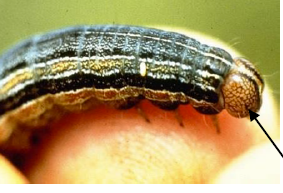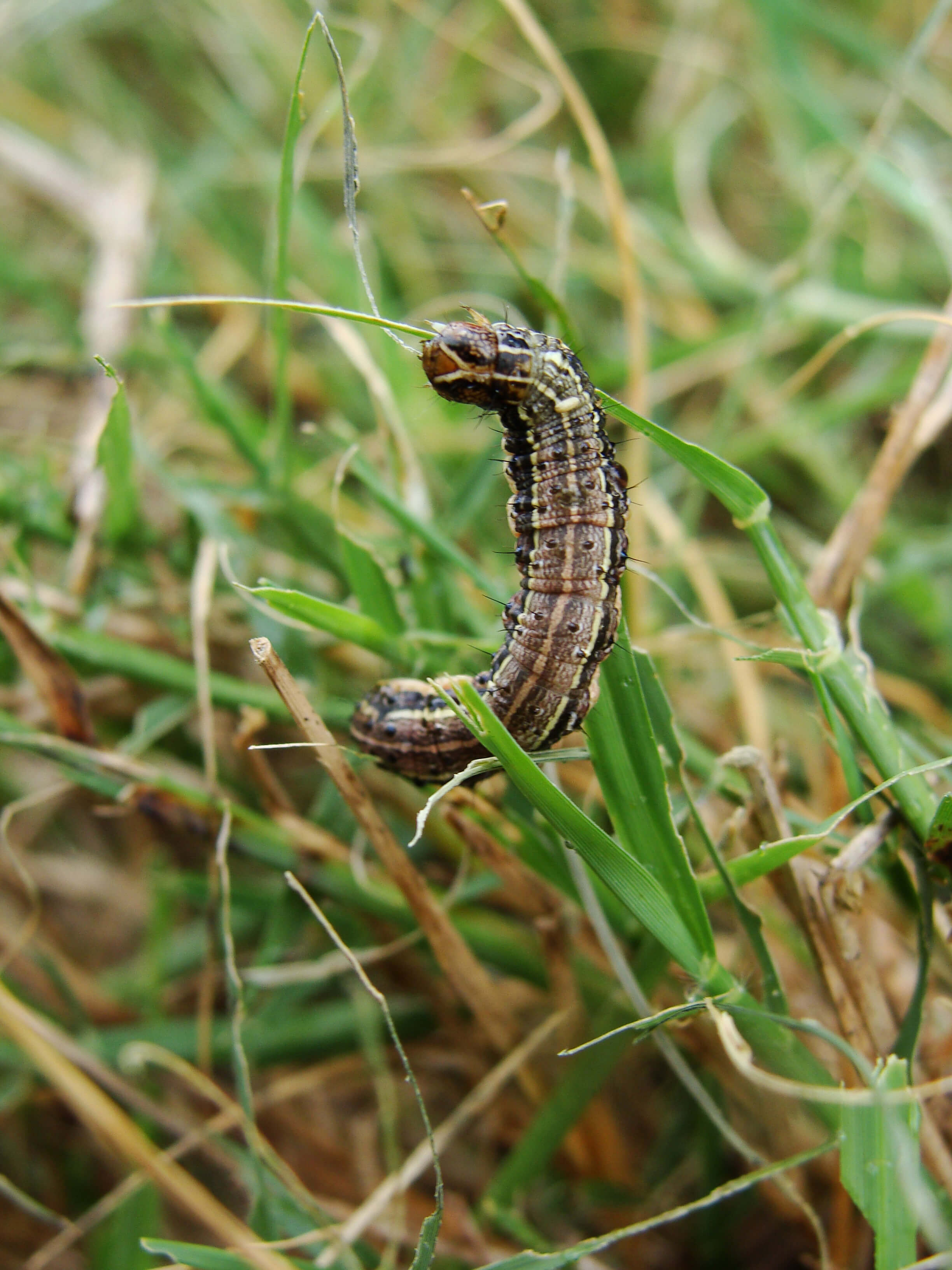Contact Title
Kelly Loftin
Extension Entomologist
Phone: 479-575-3462
Fax: 479-575-3348
Email: kloftin@uada.edu
Cralley-Warren Research Center 2601 North Young Avenue Fayetteville AR 72704
Armyworms in Arkansas
Arkansas is home to two kinds of armyworms – true armyworms and fall armyworms. During their last two stages of growth, they eat tremendous amounts of grass. Therefore, scouting pastures for armyworms is essential.
Download Managing Armyworms in Pastures & Hayfields
What is the difference between true armyworms and fall armyworms?

True Armyworms
True armyworms appear in spring and look similar to fall armyworms. Both can be very destructive. True armyworms are green with brown or black paired spots along their backs.
Download true armyworm fact sheet
When and how should I look/scout for true armyworms?
Arkansas producers are encouraged to diligently scout their pastures and hayfields for armyworms. Examine at least 10 one sq. ft. samples at random across the field. Female armyworm moths prefer to lay eggs in areas of abundant growth. Be sure to include a few of these areas in your 10 samples.
What kind of damage do true armyworms do?
The true armyworm (armyworm) can be a serious pest of pastures, hayfields and seed production fields reducing both forage availability, hay yields and seed production. Damage can appear almost overnight and infestations can be easily overlooked when the caterpillars are small and eating very little. Armyworms are a greater problem during spring, after which time, natural controls usually keep the population below threshold level. Armyworms often feed at night and remain hidden in ground litter by day.

Fall Armyworms
Fall armyworms feed on variety of forage crops but often prefer lush green well-fertilized bermudagrass which is often found in residential areas and yards.
Download Fall Armyworm Management and Recognition
When and how should I look/scout for fall armyworms?
Arkansas producers are encouraged to diligently scout their pastures and hayfields for FAWs. Examine at least 10 one sq. ft. samples at random across the field. Female fall armyworm moths prefer to lay eggs in areas of abundant growth, be sure to include a few of these areas in your 10 samples.
What kind of damage do fall armyworms do?
The fall armyworm (FAW) is one of the most devastating pests of pastures and hayfields, reducing both forage availability and hay yields. Damage can appear almost overnight and infestations can be easily overlooked when the caterpillars are small and eating very little. Beginning as early as late June or July significant fall armyworm populations can occur in Arkansas.